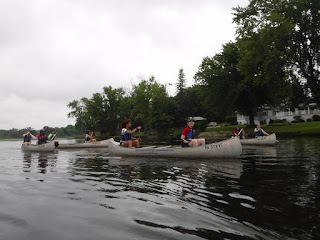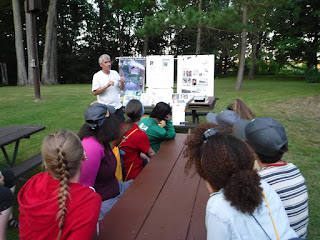

Freshwater Academy is a week-long camp that gives high school students the opportunity for hands-on experience and fieldwork in Northwestern Pennsylvania's waterways. Students spend their days studying biology and freshwater ecology at a level they can't achieve in the classroom. They will get wet, they will get dirty, and they will love it!





 Directly after breakfast creek campers and councilors headed over to Sugar Lake to go canoeing and learn about water plants. A Pennsylvania Fish and Boat employee and a Crawford County Conservation worker handed out safety instructions, life jackets, paddles, and canoes. We learned how to paddle correctly. The stern and bow of the boat were identified as well as port and starboard. They then guided us on a tour of Sugar Lake. Sugar Lake is a glacier made lake with a wide variety of plant life which a fellow creek camper has described in a previous blog. Us campers canoed very well for the most part, no one capsized and we completed a circle around the lake. The councilors planned a sneak attack with water guns and buckets as their weapons. Us campers were hit with water while passing by in their canoes, but we were then given water guns to retaliate with when we reached shore. A water fight ensued in which everyone won, lost, and got wet.
Directly after breakfast creek campers and councilors headed over to Sugar Lake to go canoeing and learn about water plants. A Pennsylvania Fish and Boat employee and a Crawford County Conservation worker handed out safety instructions, life jackets, paddles, and canoes. We learned how to paddle correctly. The stern and bow of the boat were identified as well as port and starboard. They then guided us on a tour of Sugar Lake. Sugar Lake is a glacier made lake with a wide variety of plant life which a fellow creek camper has described in a previous blog. Us campers canoed very well for the most part, no one capsized and we completed a circle around the lake. The councilors planned a sneak attack with water guns and buckets as their weapons. Us campers were hit with water while passing by in their canoes, but we were then given water guns to retaliate with when we reached shore. A water fight ensued in which everyone won, lost, and got wet.

| Testing waters A and B with different tests |